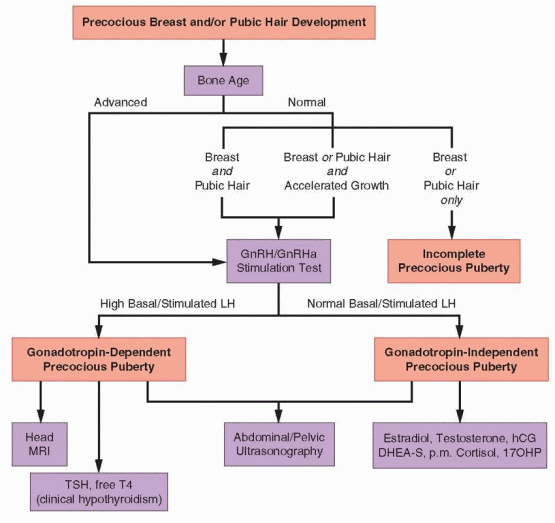
Saturday, 28 October 2017
Saturday, 21 October 2017
The best lack all conviction, while the worst Are full of passionate intensity. — W. B. YEATS
The best lack all conviction, while the worst Are full of passionate intensity.
— W. B. YEATS
1922 SN CNMA
A simple yet proud rancher in the year 1922 conspires to murder his wife for financial gain, convincing his teenage son to participate.
Thursday, 19 October 2017
antioxidants
Loading up on antioxidants can help boost your immune system says Megha Tewari, MD, family medicine doctor. She recommends eating plenty of fresh fruits and vegetables; some of the best sources of antioxidants include cranberries, strawberries, blueberries, kale, and spinach.
preniotic fiber
Eat Plenty of Prebiotics

“All health starts in the gut, including 70 percent of the immune system. A healthy gut primes the immune system, making it ready to take action and protect me from invading evildoers,” Will Bulsiewicz, MD, gastroenterologist, says. “My prescription for optimal health and protection during cold and flu season is daily consumption of prebiotic fiber. A prebiotic is a nondigestible food that promotes the growth of beneficial microorganisms in the intestines. In other words, prebiotics aren’t food for me, they’re food for my gut bacteria. The best source of prebiotics are natural plant foods like onions, asparagus, wheat bran and bananas.”
If you don’t have time for a three-month retreat, don’t worry. Imaging studies show that meditation can cause structural changes in the brain after as little as 11 hours of training. Epel suggests fitting in short “mini-meditations” throughout the day, taking a few minutes at your desk to focus on your breathing, for example: “Little moments here and there all matter.”
If you don’t have time for a three-month retreat, don’t worry. Imaging studies show that meditation can cause structural changes in the brain after as little as 11 hours of training. Epel suggests fitting in short “mini-meditations” throughout the day, taking a few minutes at your desk to focus on your breathing, for example: “Little moments here and there all matter.”
As with social interaction, meditation probably works largely by influencing stress response pathways. People who meditate have lower cortisol levels, and one study showed they have changes in their amygdala, a brain area involved in fear and the response to threat (Social Cognitive and Affective Neuroscience, vol 5, p 11).
As with social interaction, meditation probably works largely by influencing stress response pathways. People who meditate have lower cortisol levels, and one study showed they have changes in their amygdala, a brain area involved in fear and the response to threat (Social Cognitive and Affective Neuroscience, vol 5, p 11).
Meditation might even slow the ageing process. Telomeres, the protective caps on the ends of chromosomes, get shorter every time a cell divides and so play a role in ageing. Clifford Saron of the Center for Mind and Brain at the University of California, Davis, and colleagues recently showed that levels of an enzyme that builds up telomeres were higher in people who attended a three-month meditation retreat than in a control group (Psychoneuroendocrinology, vol 36, p 664).
Meditation might even slow the ageing process. Telomeres, the protective caps on the ends of chromosomes, get shorter every time a cell divides and so play a role in ageing. Clifford Saron of the Center for Mind and Brain at the University of California, Davis, and colleagues recently showed that levels of an enzyme that builds up telomeres were higher in people who attended a three-month meditation retreat than in a control group (Psychoneuroendocrinology, vol 36, p 664).
How does Etna produce its fiery mix of magmas? One possibility is that the two magmas form at different locations and mix somewhere within Etna’s plumbing system. This hypothesis would imply that the magma below the Aeolian Islands travels more than 100 kilometers along a tectonic fault to Etna. It is considered highly unlikely, though, that such an underground magma passage exists. Researchers think it is more probable that the two magma sources are mixing.
GRASS GREEN 50 SHADES
Fifty shades of green
- First published: Full publication history
- DOI: 10.1111/jpc.13739 View/save citation
- Cited by (CrossRef): 0 articlesLast updated
- Conflict of interest: None declared.
Arguably, green has always been considered a dominant colour in medicine and is often found to be the colour of choice to decorate hospitals. As early as 1914, Sherman reported feeling discomfort in working in white operating rooms and advised that ‘green should be chosen for the colour of the floor and the wainscot. A room painted in this way, the floor and the walls for six feet from the floor, bright spinach green, and all above a glazed white, was matched for use against a room painted a glazed white floor, walls and ceilings. No-one who could get into the green room to do an operation ever went into the white room’.[1] In 1921, Ludlow reported green as a restful colour and, when used in lighter shades, makes an ‘agreeable surrounding’.[2]
However, although reported as restful and agreeable, there is also something unsettling and a little sinister about the colour green. A clinician's antennae start to quiver when ‘green’ is mentioned as part of an infant's history or is noted on a physical examination: blue-green pus of a bacterial infection, the yellowish-green sclera of biliary atresia, dark green blood found in sulfhaemogolbinaemia, the greenish nails of chloronychia and the greenish hue of the skin in hypochromic anaemia (historically known as chlorosis); the list can go on.
And with the colour green comes its multitudes of shades. Wikipedia, the ‘renowned encyclopaedia’, has 73 pages in the category ‘shades of green’.[3] As clinicians, we try to dig deep into the symptomatology to narrow down our differential diagnosis. With a time-tested approach such as this comes a possibility of teasing out the specific shades of a colour, allowing it to be a diagnostic clue or to help exclude a condition. With this viewpoint, we would like to apply this to the frequent and often perplexing condition of vomiting in the newborn.
Vomiting in a newborn infant is a very common reason for parents to present to general practitioners and paediatricians and has been reported as the reason to visit the emergency departments in up to 36% of presentations.[4] Infants vomit more frequently compared with older children as they have an ‘immature gastro-oesophageal sphincter, their, position is mainly supine and liquid feeds are easier to regurgitate than solids’.[5]
Although a source of great stress for parents, the aetiology of vomiting may or may not be clinically significant. The causes are myriad and include overfeeding and gastro-oesophageal reflux, cows milk protein allergy, infections, metabolic disorders and surgical conditions.[5] The timing of onset of vomiting is a useful, although not definitive, indicator of causation, with vomiting in the first few days suggestive of a congenital intestinal atresia and later in the neonatal period suggestive of Hirschprung disease or intestinal malrotation.[6]
Bilious vomiting or gastric aspirates in a sick infant with an obvious intra-abdominal pathology usually arouses clinical suspicions and precipitates a series of tests and ultimately a diagnosis. Unfortunately, when the infant is apparently well, a single bilious vomit may be unremarkable, and clinicians may not recognise the clinical significance. The appearance of the well newborn who has fed well until recently, is well hydrated and normally perfused and with wet nappies has the potential to lull one into a false sense of security. This presentation may dissuade the clinician from referring the infant to a distant hospital and subjecting him or her to the radiation exposure of an upper gastrointestinal contrast study as not everyone with such a presentation will have intestinal obstruction. However, the life-threatening condition of malrotation should not be forgotten.
Malrotation of the intestine is a congenital condition that results from failure of the intestines to rotate and fix normally. Although not necessarily a problem in itself, it can lead to intestinal obstruction or worse – a volvulus. It is estimated to occur in approximately 1 in 500 live births.[7] The only pointer towards a diagnosis of malrotation in a newborn could be bilious vomit. A common misconception is that the abdomen should be distended if the bowel is obstructed. As the volvulus in malrotation involves very proximal bowel, the abdomen may be paradoxically scaphoid in this setting.
Appropriate action can often be delayed, even when bilious vomiting is suspected. In a questionnaire sent to neonatologists, 80% agreed to admit a newborn with a single episode of bilious vomiting for observation, although 19% felt that observation on the post-natal ward was appropriate; however, more than 50% did not consider it appropriate to order an upper gastrointestinal contrast study.[8] We suggest, from our experience, to differ with the approach of observation and believe that any bilious vomit or gastric aspirate in a newborn is a sign of intestinal obstruction unless proven otherwise and in a well newborn mandate the exclusion of malrotation.
Unfortunately, there is no consensus with regards to the precise shade of green required to diagnose vomit as being bilious. An individual's perception of shade may well be different to others. Walker reported that many general practitioners and parents do not recognise green as the colour for bile, and conversely, yellow vomit does not exclude intestinal obstruction.[8] At the other end of the spectrum, colour charts have been developed to confidently identify and act on a bilious aspirate with potential to reduce over-recognition of bile and unnecessary interruptions in feeding.[9]
Lastly, another complication of this ‘shady’ topic is the issue of colour blindness. A review article reported colour vision deficiencies in the medical profession. Of the 40 doctors in this study, 18 reported difficulties with detecting blood or bile in urine, faeces, sputum or vomit.[10] In another study, breakdown of the ability of staff to correctly identify bile colour in neonates showed that 74% of the female staff correctly identified bile, as compared to a dismal 34% of the male staff, and mothers (45%) did better than fathers (35%).[11]
Having recently witnessed death, devastation and catastrophe of Short Gut Syndrome that followed only a few hours after a bilious vomit in an apparently healthy newborn with malrotation, we were compelled to emphasise this oft-repeated dictum. Our view point is that a healthy looking newborn with a single vomit that is neither milky nor has blood in it should be suspected of having bile and requires a careful assessment by experienced practitioners. Bilious vomit or its suspicion certainly necessitates exclusion of malrotation.
For a long time researchers believed that Etna’s position at the crossroads of these faults was the explanation for its volcanism. The presence of faults, however, accounts only for the ability of magma to reach the surface; it does not explain why the magma is produced in the first place. According to most theories, the prevailing forces in the Sicilian crust are similar to those in rift zones—extensional stresses that cause thinning of the crust and upwelling of the underlying mantle. But at Sicily the African and Eurasian plates are colliding, so one would expect the stresses to be compressive rather than extensional. Moreover, only about 20 percent of the magma erupted at Etna has a chemical composition similar to that of a rift-zone volcano
Because fullerene is a pure-carbon molecule, the Sudbury breccia offered a prime location for collecting promising samples, which we did in 1993. By exploiting the unique solubility properties of fullerene, I was able to isolate the most stable molecules—those built from 60 or 70 carbon atoms each—in the laboratory. The next critical questions were: Did the fullerenes hitch a ride to the earth on the impactor, surviving the catastrophic blast? Or were they somehow generated in the intense heat and pressures of the event?
Most people are unaware of it, but our planet is under a constant barrage by the cosmos. Our galactic neighborhood is littered with comets, asteroids and other debris left over from the birth of the solar system. Most of the space detritus that strikes the earth is interplanetary dust, but a few of these cosmic projectiles have measured five kilometers (about 3.1 miles) or more across. Based on the number of craters on the moon, astronomers estimate that about 60 such giant space rocks slammed into the earth during the past 600 million years. Even the smallest of those collisions would have left a scar 95 kilometers (about 60 miles) wide and would have released a blast of kinetic energy equivalent to detonating 10 million megatons of TNT.
Be who you are and say what you feel, because those who mind don't matter, and those who matter don't mind." -- Bernard M. Baruch
Be who you are and say what you feel, because those who mind don't matter, and those who matter don't mind."
-- Bernard M. Baruch
-- Bernard M. Baruch
albumin creatinine ratio (ACR)TYPE 1 DM in the upper tertile of the normalrange at the age of 11-16 years can predict up to 85% of adolescentswho develop microalbuminuria, and all of those who develop protein-uria during follow-up.
albumin creatinine ratio (ACR) in the upper tertile of the normal
range at the age of 11-16 years can predict up to 85% of adolescents
who develop microalbuminuria, and all of those who develop protein-
uria during follow-up.
After Concussion, Teen Girls May Take Longer to Heal Than Boys
After Concussion, Teen Girls May Take Longer to Heal Than Boys
CMPI X SERUM ADIPSIN
Preliminary evidence was found that high serum adipsin after the six-month escalation phase of OIT might predict unsuccessful outcome.
. An estimated 5 billion people live in countries with little or no access to pain relief, even for those with advanced disease
. An estimated 5 billion people live in countries with little or no access to pain relief, even for those with advanced disease
Your hand and your mouth agreed many years ago that, as far as chocolate is concerned, there is no need to involve your brain." -- Dave Barry
Your hand and your mouth agreed many years ago that, as far as chocolate is concerned, there is no need to involve your brain."
-- Dave Barry
-- Dave Barry
TURNER ANNUAL SCREENING CLINIC
Annual screening should be carried out, including:
- TFTs for autoimmune thyroid disease; antithyroid antibodies may be measured if TFTs are abnormal
- LFTs to screen for 'Turner's hepatitis'
- BP measurements for HTN
- FBS and HbA1c for diabetes risk
- Blood lipids to monitor dyslipidaemia
- Hearing screen to identify those with sensorineural or other types of deafness.
CFX DM1
The frequency of hypoglycemia in children with CF was higher in CGM than that in OGTT. Insulin secretion was delayed and total insulin levels increased in the hypoglycemic patients. Glucose instability/hypoglycemia is associated with poorer lung function in patients with CF, independent of nutritional status
ADLT ED The mean time per PIVC insertion was 15.3 (95% CI: 12.6 - 17.9) minutes
The mean time per PIVC insertion was 15.3 (95% CI: 12.6 - 17.9) minutes
Wednesday, 18 October 2017
QT 4107-3408 PJS
What are the clinical features of Peutz-Jeghers syndrome?
Clinical features of PJS can be divided into two types, cutaneous and gastrointestinal.
Cutaneous features
The most noticeable cutaneous feature of PJS is the appearance of melanocytic macules (pigmented spots) in 95% of patients. Tan, dark brown, or bluish black flat patches 1 to 5 mm in size are seen around the mouth, lips, gums, inner lining of the mouth, eyes, hands and feet, fingers and toes, anus and genital areas. Pigmentation usually appears before 5 years of age and may fade after puberty.
Gastrointestinal features
Gastrointestinal polyps occur later on in life and are rare in childhood. The polyps may cause bleeding and abdominal pain. They have a high chance of becoming malignant.
Small intestine intussusception (when one portion of an intestine protrudes into another) and intestinal obstruction are also fairly common complications of Peutz-Jeghers syndrome.
How is Peutz-Jeghers syndrome diagnosed?
The diagnosis is suspected when there are typical clinical features. Laugier-Hunziker syndrome presents with similar pigmented macules around and inside the mouth, but often also presents with melanonychia (longitudinal pigmented bands on one or more nails). Laugier-Hunziker syndrome is not associated with STK11 gene mutations.
Diagnostic work-up should include:
- Clinical assessment of pigmentary lesions
- Complete blood cell (CBC) count as polyps may bleed leading to anaemia
- Exploratory endoscopy to determine the presence and location of polyps
- Pathological examination of polyps to confirm diagnosis
- STK11 gene testing, if available
What is the treatment for Peutz-Jeghers syndrome?
Approximately 50% of patients with PJS develop and die from cancer by 57 years of age. The overall risk of Peutz-Jeghers syndrome patients developing a cancer over adult life is 93%. Cancers are not only located on the gastrointestinal tract but can occur on many other sites including the breast, ovary, testicle, pancreas, uterus, oesophagus and lung.
There is no specific treatment for PJS but the main goal is to manage and prevent associated problems of intestinal obstruction and intussusception, and cancer development.
Management of PJS patients should include:
- Annual CBC
- Annual physical examination of breasts, abdomen, pelvis and testes
- Repeated removal of bleeding or large polyps (>5 mm) by endoscopic polypectomy
- Laparotomy and resection as required for repeated or persistent intestinal intussusception, obstruction, or persistent bleeding
- Surgical removal of cancers as they are diagnosed
DNA screening may be offered to family members to see if they have inherited the gene mutation. If so, they should also undergo regular screening for disease.
The freckling may be less obvious with careful sun protection. In some cases, the pigmentation may be lessened by cosmetic treatment. Cosmetic camouflage may also be useful.
Related information
References
- OMIM – Online Mendelian Inheritance in Man (search term Peutz-Jeghers syndrome)
Laugier-Hunziker syndrome
Author: Vanessa Ngan, Staff Writer, 2006.
What is Laugier-Hunziker syndrome?
Laugier-Hunziker syndrome is a harmless rare sporadic disorder that is characterised by flat brown marks on the lips and inside the mouth, and frequently brown stripes on the nails. It is important to distinguish it from Peutz-Jeghers syndrome, which has similar cutaneous features but also has associated gastrointestinal polyps.
Peutz-Jegher syndrome is due to mutation of the SKT11 gene. The cause of Laugier-Hunziker syndrome is unknown. It does not appear to run in families, although there has been one reported case involving a mother and two daughters with the condition. The syndrome occurs in early- to mid-adult life and affects both males and females.
What are the clinical features of Laugier-Hunziker syndrome?
The main clinical feature of Laugier-Hunziker syndrome is the appearance of pigmentation (dark spots) on the buccal mucosa (inner lining of the cheeks) and the lips (usually the lower lip). Sometimes pigmentation is also found on the gingiva (gums), tongue, and roof of the mouth. Features of the lesions are:
- brown, black or slate marks that have a smooth surface
- they appear as solitary spots, grouping of multiple spots, or spots joined together to form patches
- usually 5mm or less in diameter, but buccal lesions of 1cm have been reported
Oral hyperpigmentation may be accompanied by nail and/or skin pigmentation. Oral and nail involvement is found in about 60% of cases. Nail pigmentation is permanent and appears in the following ways:
- one longitudinal band per nail, 1-8 mm thick
- two longitudinal bands per nail, 1-8 mm thick
- pigmentation of half a nail
- complete pigmentation of a nail
Skin hyperpigmentation is sometimes found on the neck, abdomen, fingers, palms, soles and genital region.
Laugier-Hunziker syndrome
What is the treatment for Laugier-Hunziker syndrome?
No treatment is required for Laugier-Hunziker syndrome. Laugier-Hunziker has no association with systemic diseases so there are few if any complications. If systemic symptoms are apparent a patient must be worked-up for another diagnosis.
Cosmetically disfiguring or bothersome lesions may be treated with laser therapy.
Related information
References
- Book: Textbook of Dermatology. Ed Rook A, Wilkinson DS, Ebling FJB, Champion RH, Burton JL. Fourth edition. Blackwell Scientific Publications.
HSP FOLLOW UP JR PROTOCOL
Follow-up
For a well child going home, ensure the parents are aware of possible new features/complications and know whom to contact if there should be further acute problems. Warn them the disease may remit and relapse. Arrange appropriate follow-up.
The purpose of follow-up, once the acute symptoms have settled, is to detect and monitor renal involvement. This can appear up to at least 3 months after initial presentation, and may be associated with late (years later) deterioration in renal function.
BP and urinalysis must be checked weekly for the first 4 weeks and monthly until 3 months.
The first 5 of these checks could be either at the GP surgery, if the GP agrees or on the Clinical Decisions Unit (CDU).
At 3 months:
o if urine negative and BP normal, ensure GP review of BP and urinalysis at 6 months from diagnosis; with an instruction to the GP that if the 6 month check and all previous ones have been completely clear, no further follow up is required. If initial cheeks showed some abnormal urine/BP but 3 month and 6 month checks are clear, annual review by GP is indicated, for life.
o if urine positive for blood and/or protein, or BP raised: treat BP as appropriate and arrange Paediatric Consultant review at 6 months and 1 year.
At 1 year:
o if urinalysis still positive/BP raised, consider referral for renal biopsy.
o if all negative, arrange annual urinalysis and BP for life. This can normally be at GP surgery if age of child appropriate and GP happy to do this.
References:
1. Tizard EJ, Hamilton-Ayres MJ, Henoch-Schonlein Purpura. Arch Dis Child Educ Prac Ed 2008; 93:1-8
2. Chartapisak W, Opastiraku S et al. Prevention and treatment of renal disease in Henoch-Schonlein purpura: a systematic review. Arch Dis Child 2008; 94; 132-137
.
For a well child going home, ensure the parents are aware of possible new features/complications and know whom to contact if there should be further acute problems. Warn them the disease may remit and relapse. Arrange appropriate follow-up.
The purpose of follow-up, once the acute symptoms have settled, is to detect and monitor renal involvement. This can appear up to at least 3 months after initial presentation, and may be associated with late (years later) deterioration in renal function.
BP and urinalysis must be checked weekly for the first 4 weeks and monthly until 3 months.
The first 5 of these checks could be either at the GP surgery, if the GP agrees or on the Clinical Decisions Unit (CDU).
At 3 months:
o if urine negative and BP normal, ensure GP review of BP and urinalysis at 6 months from diagnosis; with an instruction to the GP that if the 6 month check and all previous ones have been completely clear, no further follow up is required. If initial cheeks showed some abnormal urine/BP but 3 month and 6 month checks are clear, annual review by GP is indicated, for life.
o if urine positive for blood and/or protein, or BP raised: treat BP as appropriate and arrange Paediatric Consultant review at 6 months and 1 year.
At 1 year:
o if urinalysis still positive/BP raised, consider referral for renal biopsy.
o if all negative, arrange annual urinalysis and BP for life. This can normally be at GP surgery if age of child appropriate and GP happy to do this.
References:
1. Tizard EJ, Hamilton-Ayres MJ, Henoch-Schonlein Purpura. Arch Dis Child Educ Prac Ed 2008; 93:1-8
2. Chartapisak W, Opastiraku S et al. Prevention and treatment of renal disease in Henoch-Schonlein purpura: a systematic review. Arch Dis Child 2008; 94; 132-137
.
Tuesday, 17 October 2017
JEKYLL The love of gardening is a seed once sown that never dies."
The love of gardening is a seed once sown that never dies."
BDHA MIDDL WAY
The Middle Way
At the time of Buddha’s quest for enlightenment, there were many religious practices that called for either intense overindulgence in the senses, or strict deprivation such as weeks of fasting. Realizing that neither were truly beneficial, he devised what would later be known as “The Middle Way” to enlightenment - a balanced approach that emphasized inward rather than outward renunciation.
BDHA3
The three major tenents Buddha taught his followers were
not to be ignorant, hate others or get angry
not to be ignorant, hate others or get angry
sg A truly intelligent mind is neither influenced by memory nor deluded by imagination.
A truly intelligent mind is neither influenced by memory nor deluded by imagination.
Adolescents and adults who were born very prematurely may have "older" brains than those who were born full term, a new study reveals.
Adolescents and adults who were born very prematurely may have "older" brains than those who were born full term, a new study reveals.
A "portion" is how much food you choose to eat at one time, whether in a restaurant, from a package, or in your own kitchen. Versus a portion, a "serving" size is the amount of food listed on a product's Nutrition Facts. Sometimes, the portion size and serving size match; sometimes they do not.
A "portion" is how much food you choose to eat at one time, whether in a restaurant, from a package, or in your own kitchen. Versus a portion, a "serving" size is the amount of food listed on a product's Nutrition Facts. Sometimes, the portion size and serving size match; sometimes they do not.
low-fat meals tend to improve endothelial function, whereas high-fat meals tend to worsen it. This goes for animal fat, as well as isolated plant fats, such as sunflower oil. But, maybe it’s just the digestion of fat rather than the fat itself? Our body can detect the presence of fat in the digestive tract and release a special group of hormones and enzymes. Researchers tried feeding people fake fat and found that the real fat deprived the heart of blood while the fake fat didn’t.
low-fat meals tend to improve endothelial function, whereas high-fat meals tend to worsen it. This goes for animal fat, as well as isolated plant fats, such as sunflower oil. But, maybe it’s just the digestion of fat rather than the fat itself? Our body can detect the presence of fat in the digestive tract and release a special group of hormones and enzymes. Researchers tried feeding people fake fat and found that the real fat deprived the heart of blood while the fake fat didn’t.
A beck, in this context is a gesture designed to attract attention (as if you were trying to catch the eye of a waiter) and is where we get the expression “At his beck and call”
A beck, in this context is a gesture designed to attract attention (as if you were trying to catch the eye of a waiter) and is where we get the expression “At his beck and call”
The relative paralysis of our arteries for hours after eating fast food and cheesecake may also occur after consuming olive oil. Olive oil was found to have the same impairment to endothelial function as high-fat foods like sausage and egg breakfast sandwiche
The relative paralysis of our arteries for hours after eating fast food and cheesecake may also occur after consuming olive oil. Olive oil was found to have the same impairment to endothelial function as high-fat foods like sausage and egg breakfast sandwiche
There have also been studies showing that even extra-virgin olive oil, contrary to expectations, may significantly impair endothelial function. Why then do some studies suggest endothelial function improves on a Mediterranean diet, which is rich in olive oil? It may be because the Mediterranean diet is also rich in whole grains, fruits, vegetables, beans, and walnuts. Fruits and vegetables appear to provide some protection against the direct impairment of endothelial function produced by high-fat foods, including olive oil; therefore, improvements in health may be in spite of, rather than because of, the oil. In terms of their effects on post-meal endothelial function, the beneficial components of the Mediterranean diet may primarily be the antioxidant-rich foods, the vegetables, fruits, and their derivatives, such as balsamic vinegar. Adding some vegetables to a fatty meal may partially restore arterial functioning and blood flow.
There have also been studies showing that even extra-virgin olive oil, contrary to expectations, may significantly impair endothelial function. Why then do some studies suggest endothelial function improves on a Mediterranean diet, which is rich in olive oil? It may be because the Mediterranean diet is also rich in whole grains, fruits, vegetables, beans, and walnuts. Fruits and vegetables appear to provide some protection against the direct impairment of endothelial function produced by high-fat foods, including olive oil; therefore, improvements in health may be in spite of, rather than because of, the oil. In terms of their effects on post-meal endothelial function, the beneficial components of the Mediterranean diet may primarily be the antioxidant-rich foods, the vegetables, fruits, and their derivatives, such as balsamic vinegar. Adding some vegetables to a fatty meal may partially restore arterial functioning and blood flow.
Subscribe to:
Comments (Atom)























